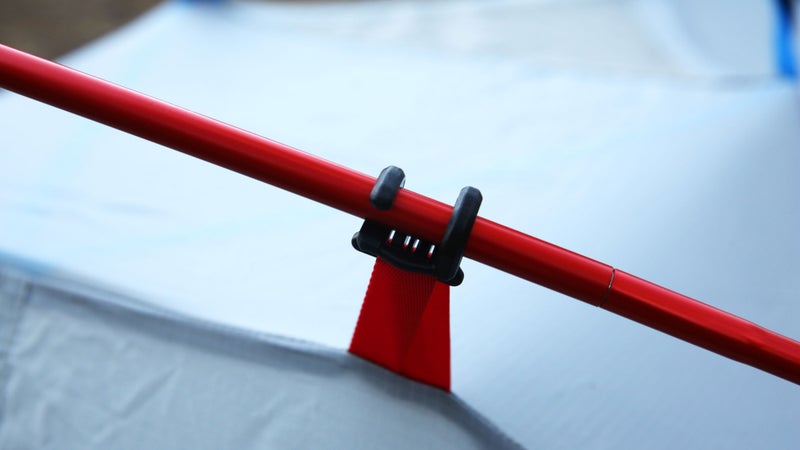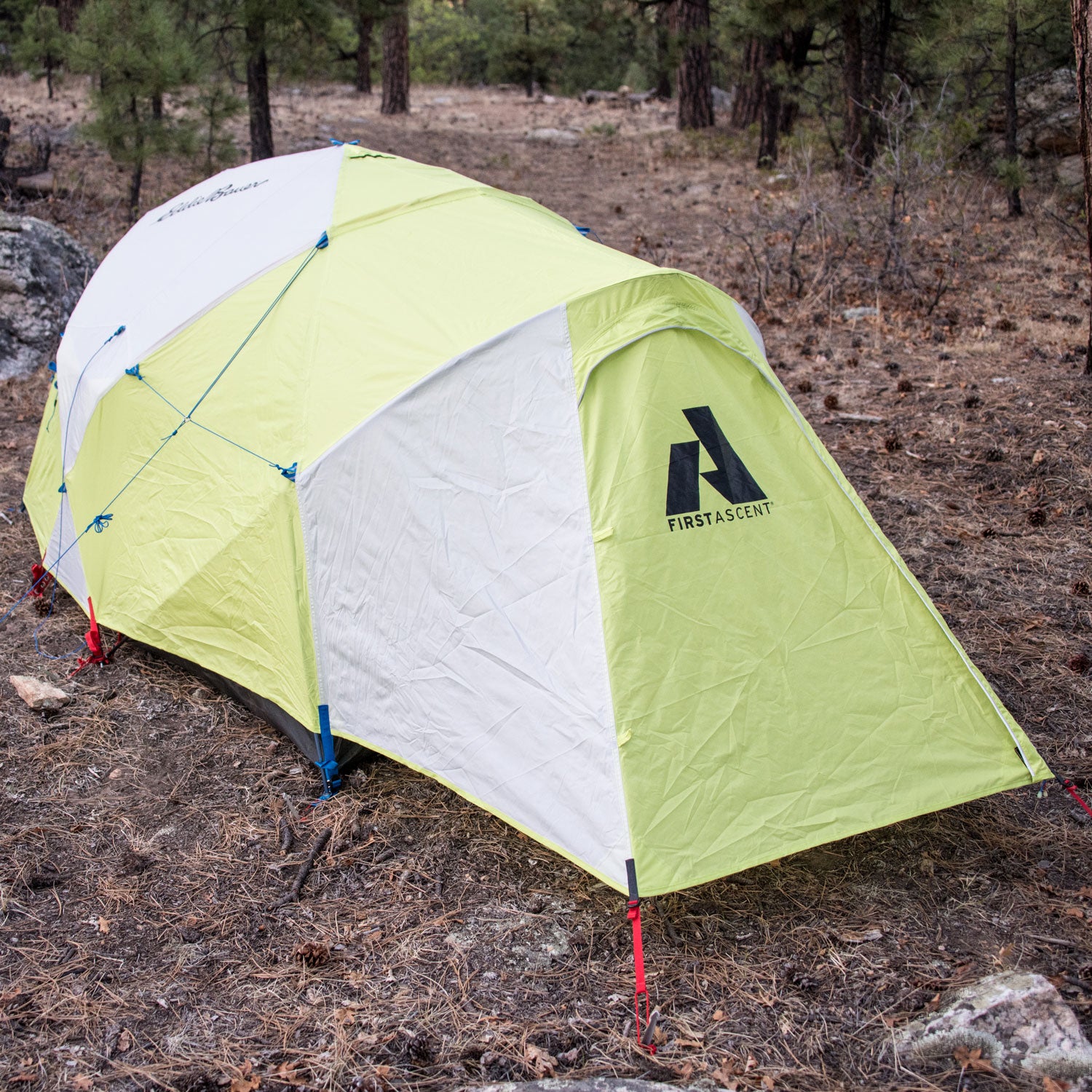Since its launch in 2014, Eddie Bauer’s has been a regular sight at high-alpine camps around the world. The three-person, double-walled model was built to be burly yet easy to set up, with a small footprint, lots of head room, and the ability to withstand gusts of up to 80 miles per hour. Still, like any bombproof four-season tent, it’s heavy, at 11.5 pounds.
Now there’s a lighter, smaller option. In July (specific launch date TBD), the brand is releasing a two-person version called the Katabatic 2 ($700). (An updated version of the original Katabatic 3 is available now) At ten pounds, this tent is lighter than the three-person version, but it’s still burly and laden with details that make it ideal for gnarly, high-alpine weather.
The two-person tent has 38 square feet of floor space—making it about ten square feet smaller than its predecessor. But many of the original Katabatic’s features remain: two ceiling vents, which help alleviate condensation, often a problem with double-walled mountaineering tents; steep walls, which keep the footprint tight without costing head room (in fact, the tent feels positively spacious); tough 20-denier nylon walls and fly and an even hardier 70-denier nylon floor; and a large front vestibule.
The tent gets several more small updates, all centered around making it more bombproof and comfortable. The rear vestibule now has a curved zipper, rather than a vertical one, making for a bigger opening and easier entrance. The sidewalls are steeper to better shed snow. And instead of C-shaped hooks, the tent now clips to the poles using two-sided hooks that twist on and lock in place for added security.

And hallelujah! The Katabatic 2 also has more internal pockets—14 in all. There’s enough storage space to stash wet layers, headlamps, toiletries, food, and pretty much anything else you might want quick access to if you’re tent-bound for multiple days during a storm.
As with any built-out mountaineering tent, the Katabatic 2 doesn’t set up in a flash. It took me about 30 minutes with no instructions (and no help). But thanks to the color-coordinated poles, setup is fairly intuitive. Three-pronged guylines—a single line threaded through three attachment points—self-equalize, so you can tension out the shelter quickly. We haven’t taken the Katabatic 2 on any high-altitude expeditions, but we did test it on a blustery New Mexico day. The wind was lifting our camp chairs and tossing them across the rocky ground, but the tent didn’t budge or rattle.
It would be silly to call this ten-pound hulk lightweight, but as far as storm-ready mountaineering tents go, the Katabatic 2 seems to maximize weight, strength, and livability. And at $700, this shelter is far from cheap, but it’s less than many other two-person mountaineering tents on the market (the costs $800; Black Diamond’s costs $850). It’s overkill for a casual desert camping trip, but if you’re headed to 6,000 meters or otherwise expecting possibly apocalyptic conditions, it’s just right.


